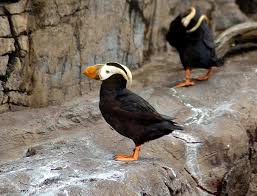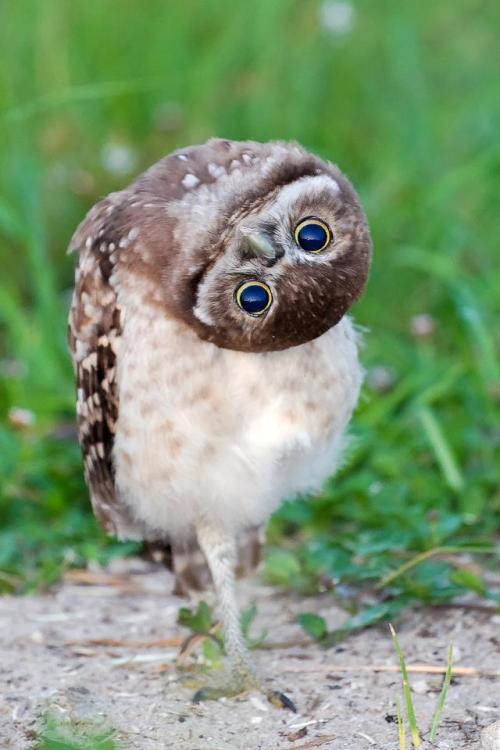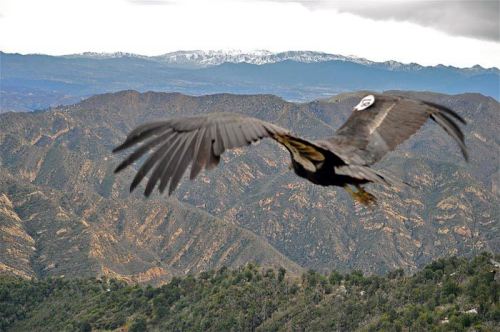For “Winged Wednesday”:
Henslow's Sparrow


“This sparrow is notable for the moss-green plumage on its head and nape, reddish-brown wings, and abrupt, hiccup-like song. It is inconspicuous, preferring to run through the tall grass, rather than fly, to avoid detection. An unusual characteristic for the sparrow is that it sings at night in the breeding season, its song being one of the few prairie sounds at 1 AM on a dark, moonless night.
Habitat loss is probably the biggest threat to the Henslow’s Sparrow; loss of grasslands through fire suppression, conversion to agriculture or pine plantations, and earlier and more frequent cutting of hayfields have all contributed to a population decline over the last three decades that is among the steepest of any North American grassland bird species. Habitat destruction on the wintering grounds has also contributed to its decline.
The Conservation Reserve Program of the federal Farm Bill has created undisturbed grassland habitat resulting in local increases. In addition, reclaimed strip mines have proved to be suitable as breeding habitat and some grasslands on former strip mines support as many as 2,000 birds. Managed grasslands on military reservations such as Fort Riley, Kansas, and Fort Campbell, Kentucky, also support significant populations.”
Help ABC conserve this and other birds and their habitats!
Listen to a two-minute broadcast about this bird!
Photo: George Jett; Range Map, NatureServe
_______________
This Giant Bird Dives 150 Feet Underwater for Food
“In what seems like a highly inefficient food procurement process, the majestic cormorant, a variety of seabird, dives to the sea floor in search of food.”
“Scientists with the Wildlife Conservation Society and the National Research Council of Argentina attached a camera to the back of a cormorant to track its dietary regimen. After it reaches the bottom of the sea, they follow it for nearly two minutes before it finds something suitable — 150 feet below the surface of the ocean. The birds typically eat fish and other marine life, and this cormorant is thought to have grabbed a snake-like swimmer.”
___________
Thousands Arrested in INTERPOL Operation Targeting Illegal Trade in Birds

Saffron-headed Parrot, Fundación ProAves
(Washington, D.C., August 1, 2012) “More than 8,700 birds and other animals have been seized and nearly 4,000 people arrested in a global crackdown on the black market trade in Latin American birds, according to INTERPOL. “Operation Cage” targeted illegal bird and egg sales in Central and South America and Europe.
Between April and June of 2012, authorities seized not only thousands of live birds, but turtles, fish, mammals, and elephant ivory. The raids and arrests took place at ports, airports, open-air markets, pet stores, and taxidermy shops. Along with the birds and other animals, authorities seized trapping equipment, guns, and ammunition.
Operation Cage was launched in response to the growing illegal trans-border trade of captive-bred and wild birds and eggs, and the increasing involvement of organized crime networks in their transit from Latin America to Europe.
The global black market for exotic birds is a multi-billion-dollar business that has had a big impact on bird populations in Central and South America. According to the International Union for the Conservation of Nature (IUCN), roughly 100 of the world’s 350 parrot species are now threatened with extinction by illegal seizure for trade and habitat loss.”
More at: http://www.abcbirds.org/newsandreports/stories/120801.html
___________
Where have all the puffins gone?

Tufted Puffins
“Several tufted puffins that were rehabilitated after the die off earlier this year were released at Haystack Rock, Cannon Beach, OR, in May.
Over the Independence Day holiday the Friends of Haystack Rock celebrated with the “Great Cannon Beach Puffin Watch,” a three-day event where visitors watched puffins and other birds during the peak of nesting season. While tufted puffins were very visible on Haystack Rock during the celebration, the number of the birds has declined from last year.
Haystack Rock
Tim Halloran, a retired biology teacher who is a volunteer bird surveyor for the U.S. Department of Fish and Wildlife, said the data he has collected has not yet been analyzed, but the number of birds is down. “It’s definitely fewer birds,” said Halloran.
Halloran spends 20 hours a week collecting data at Haystack Rock and he said the largest number of tufted puffins he has identified on the rock at one time was 25. Two years ago there were 150 tufted puffins nesting on the rock during breeding season.” More at: http://www.cannonbeachgazette.com/news/local_news/article_919ff0b4-d124-11e1-a065-001a4bcf887a.html
More about Puffins: http://www.wildbirdshop.com/Birding/t-puffin.html
_________
Rare Central Valley blackbirds saved by unusual partnership
“Four Central Valley farmers are partnering with the have agreed to partner with the Natural Resources Conservation Service and Audubon California in an effort to save the rare tricolored blackbird, a California “Bird Species of Special Concern.”
Still photo from NRCS video
Together the farmers and biologists have protected 60,000 breeding birds -- one-fifth of the species' entire global population -- after the farmers agreed to delay their harvest schedule and allow the birds to fledge safely, says the Davis-based office of the Natural Resources Conservation Service.
"I have never seen so many tricolored blackbirds as I have this year," says Rick Gorzeman, a dairy farmer in Tulare County. "At first we didn't know what to do but then I heard of a sign up program with the NRCS. This allowed me to let my wheat grow in the field longer while the birds' eggs hatched."
Every spring, tricolored blackbirds build large colonies of nests in the Central Valley's marshy areas and also in areas that were historically marshland but are now cropland. The birds have adapted to the change in vegetation and now over 40 percent of the birds build their nests in silage fields such as triticale and wheat.” More at: http://www.centralvalleybusinesstimes.com/stories/001/?ID=21445
__________
America's Great Outdoors Photo: Matthew Paulson
“How cool is this photo of a Burrowing Owl?”
“These owls from Washington are making their way to Canada, where the birds are endangered, to participate in the country’s owl breeding program. The conservation effort is a result of coordination between the U.S. Fish and Wildlife Service Office of International Affairs and several other USFWS programs.” From: http://americasgreatoutdoors.tumblr.com/post/28838948651/how-cool-is-this-photo-of-a-burrowing-owl-these”
__________
Scientists discover pesticides are reason behind bee kill-off

“Scientists have been confounded by the rapid disappearance of bee colonies across the U.S. and around the world, but two recent studies suggest that pesticides are playing a leading role in the decline, The New York Times reports.
The journal Science published two studies recently in which scientists suggest that low levels of a commonly used pesticide can have a devastating effect on bee colonies, the news outlet reports.
One study by French researchers noted that the pesticides, known as neonicotinoids, may cloud honeybees' brains, making it difficult for them to return home to the colony. A British study showed that the chemicals prevent bumblebees from supplying the hive with enough food to create more queens.
These pesticides are commonly used by farmers to protect grains, cotton, beans, vegetables and many other crops, according to The Washington Post. Some people are starting petitions to ban the use of this chemical on farms in order to save the bees.
Unlike older pesticides, the neonicotinoid pesticides are most often introduced directly into the seeds of crops planted by farmers and thus permeate the entire plant as it grows — including the pollen and nectar the bees feed on. (From me: Monsanto again!)
Spraying of the older pesticides could be halted when plants were flowering so bees and other pollinators would not be harmed. With the neonicotinoids, which kill pest insects by attacking their central nervous systems and are derived from the same nicotine found in tobacco, that kind of timing is not possible.
“Three or four years ago, I was much more cautious about how much pesticides were contributing to the problem,” Dr. Pettis said. “Now more and more evidence points to pesticides being a consistent part of the problem.”” More at: http://www.theanimalrescuesite.com/clickToGive/ars/article/Scientists-discover-pesticides-are-reason-behind-bee-kill-off853
___________
'This is an emergency': Florida bird may soon be extinct.
KENANSVILLE — “A type of sparrow that lives only in Florida has mysteriously plunged in number so dramatically that scientists fear it will vanish forever well before the end of this decade.
Florida grasshopper sparrows, which inhabit grasslands in the state's interior south of Orlando, have been listed as endangered for the past 26 years. But the furtive birds have all but disappeared in recent years from one of their last three prairie refuges and, in what has become a wildlife emergency, may now total fewer than 200 in just two counties, Osceola and Okeechobee.
Sparrow advocates and researchers, including those at Audubon of Florida, Archbold Biological Station and government agencies, think it's likely that some sparrows will have to be captured and bred in captivity to prevent them from disappearing altogether.
Such a possibility is hauntingly reminiscent of an earlier, shameful chapter in the history of Florida's environment, when the dusky seaside sparrow of east Central Florida was all but annihilated by mosquito eradication in marshes surrounding Kennedy Space Center.” More at: http://articles.orlandosentinel.com/2012-07-22/news/os-florida-sparrow-extinction-bound-20120722_1_dusky-seaside-sparrow-grasshopper-sparrows-extinction-vortex
___________
Here is a great shot of an endangered California Condor in flight.
“Hopper Mountain National Wildlife Refuge provides an essential habitat for California condors. The Refuge hosts a variety of habitats which support diverse groups of plant and animal species: 900 acres of grassland which is part of historic condor foraging range, 1049 acres of chaparral and coastal sage scrub, 350 acres of oak and walnut woodland, 110 acres of riparian habitat and 3 acres of fresh water marsh.”
Photo: Kim Valverde, USFWS
_______________
"Little Devil" Bird May Warrant Federal Protection as Endangered Species

Black-capped Petrel by Brian Patteson
“The Black-capped Petrel – known locally as “Diablotin” meaning Little Devil – has an estimated world population of only approximately 5,000 individuals. Its nesting sites remained a mystery until 11 nests were located in southeastern Haiti in 1963. It acquired its nickname as a result of its nocturnal habits, its unusual, eerie calls, and its tendency to produce a haunting, flutelike sound during nocturnal flights, apparently created by wind passing over its wings.
The Black-capped Petrel is threatened by predation from introduced mammals, deforestation, and human encroachment in nesting areas. Urbanization and associated increases in artificial lights likely increase risks of collision with trees, wires, communications towers, and buildings. At sea, offshore energy development and oil spills may pose additional hazards.
“This bird is in trouble and needs special conservation attention that could result from a finding of ‘endangered’ or ‘threatened.’ While recently discovered nesting sites in national parks in Haiti and the Dominican Republic are protected on paper, charcoal production and logging in the immediate vicinity are cause for serious concern about their long-term conservation,” said Dr. George Wallace, Vice President for Oceans and Islands at American Bird Conservancy, a leading U.S. Bird Conservation Organization.
The Black-capped Petrel nests in burrows or crevices in cliffs in montane forests at an elevation of 5,000 – 7,500 feet. Nesting birds commute from their breeding sites in the mountains to foraging sites at sea where they feed on fish, invertebrates, and squid.
While Black-capped Petrels are known to range up the U.S. East Coast as far as New England, they are confirmed breeding only in Haiti and the Dominican Republic. Researchers suspect, however, that they may persist on Cuba, Jamaica, and on Dominica, where they have been seen both off the coast and inland. The bird was once common on Guadeloupe, but was extirpated there in the 19th Century; it apparently also nested on Martinique.” More at: http://www.abcbirds.org/newsandreports/stories/120712.html
__________
On This Day:
Land Rovers used in famous Great Train Robbery, Aug 8, 1963:
“On this day in 1963, the 15 thieves involved in the Great Train Robbery, one of the most famous heists of all time, escape in an ex-British Army truck and two stolen Land Rover four-wheel drive all-terrain vehicles, making off with some $7 million in stolen loot.
The mastermind of the Great Train Robbery was Bruce Reynolds, a known burglar and armed robber. Inspired by the railroad heists of the Wild West in America, Reynolds and 14 other men wearing ski masks and helmets held up the Royal Mail train heading between Glasgow, Scotland, and London, England. They used a false red signal to get the train to stop, then hit the driver with an iron bar, seriously injuring him, in order to gain control of the train. The thieves loaded 120 mailbags filled with the equivalent of $7 million in used bank notes into their Land Rovers and sped off. The vehicles had been stolen in central London and marked with identical license plates in order to confuse the police.
In their hideout at Leatherslade Farm in Buckinghamshire, England, the robbers divided their loot. Viewed as folk heroes by the public for the audacious scale of their crime and their flight from justice, 12 of the 15 robbers nevertheless were eventually captured. In all, the gang of thieves received a total sentence of some 300 years. One of them, a small-time hood named Ronnie Biggs, escaped from prison after just 15 months and underwent plastic surgery to change his appearance. He fled the country and eluded capture for years, finally giving himself up in 2001 when he returned from Brazil voluntarily to serve the 28 years remaining in his sentence.
The two Land Rovers used in the robbery were discovered at the thieves' hideout; a car enthusiast still owns one of them today. Produced by the British-based Rover Company, the Land Rover made its debut at the Amsterdam Motor Show in 1948. It was modeled after the four-wheel drive American-made Jeeps used by the British War Department during World War II and was made of cheaper, readily available aluminum alloy due to the postwar shortage of steel. By 1960, Land Rover production had reached 500,000 vehicles per year, and the all-terrain vehicle had become popular in all types of climates--desert, jungle and city--around the world. Rover later introduced an upscale version called the Range Rover, which become another bestseller for the company. The German automaker BMW purchased Rover in 1994, but split the brand six years later, selling the Land Rover name to Ford Motor Company. In 2008, Ford sold Land Rover, along with Jaguar, to Tata Motors Ltd., India's top automaker.”
__________
Yesterday:
The puppies are quick learners. I have some newspaper down in one corner of the Grooming Room, and when I let them out of the puppy pen several times a day, they use it. I have to close the door on the puppy pen to change their papers in there, or they get in there and ‘help’ me. Streaker is learning that screaming to get his own way, will get him ignored. As soon as he is quiet, I pick him up. Just like a toddler soon learns that you ignore a tantrum, so it doesn’t work! I pick each one up and give it a cuddle and a once over, when I put them back in the puppy pen, so they like that.

Ray asked to use my mower in his son’s yard, which is next door on the other side of my house. His son had been sick, and it was overgrown with weeds. Well, my mower is a mulching mower, and I knew that it would have a struggle, and possibly break it, if it was used for that. You never know what bits of metal or wire are lurking in weeds.
I had an old side-discharge mower in the RVport, that we hadn’t got around to fixing, so now was the time. Jay and I dumped out the old gas, took off the air filter, and sprayed carburetor cleaner in the carb and gas tank, then put fresh gas in it. We put oil in it, and it fired up. Jay went to try it out on a patch of high grass, and I could see that the back of the deck was lower than the front. We put it up on a special low stand that we have for that, which is usually a painting table, but with the removable top off, it holds up a mower so you can work underneath. This was one of those mowers that you have to unbolt the wheels and put the axle and wheels in a different hole on the deck. It took a cheater pipe to get the bolts undone, but we did it. It could use a new blade, but there was no knowing what it would encounter in that yard. I took it over to Ray’s leaving a note asking him to use it, instead of my good mower, as he was gone.
Later that afternoon an exhausted, drippy wet, Ray came to my door, and said that he had better hire Jay to mow it. I could tell that his blood pressure was rocketing. Jay and his mother were shopping, so I left a message.
In the evening Jay arrived on his ATV, with a scythe, cut down the weeds and then mowed it. Now I won’t have to see that eyesore every day.





















1 comment:
I need to go back through your posts and find out about the puppies. I guess I was camping and not reading blogs when you got them. It sounds like you've taken on a big job!
Post a Comment